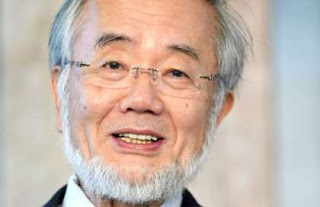This Winter break is a great time to take care of the "loose ends" of this year. Here is a few notes from books I recently finished reading.
------------------------------------------------------------
A Japanese book about how Chinese immigrants-small business people start up their business ("Chinese immigrants' Notebook for entrepreneurship").
When they start up a (small) business, they focus on profit. They divide three main business functions to three different persons; "One who thinks (plans)", "one who works (on daily activities)", and "one who provides money". And the "thinker" should leave his schedule open. Calculate return of investment even for education. ....some of the advice were based on logic that were somewhat counter-intuitive. But the book claims the advice work.
Scientific research labs in academic settings are like small businesses. Intentionally or not, traditional lab startup is structured in just like the Chinese business people's way. The PI thinks, the lab tech/post-doc/student works, and the institute or the granting agency provides money. I found the parallel interesting.
-----
Another Japanese book about Alfred Adler's individual psychology, titled "Courage to be disliked". It was a best seller in Japan, sold over 1.4 million copies since 2013.
The book is written in a form of dialog between a young "seeker" character and an older philosopher who explains Adler's psychology and philosophy. There are unique viewpoints in the philosophy that may be different from common views.
"People forge emotions such as anger of fear to justify themselves"
"Anger is like a tool that you can turn on and off"
"Trauma from the past does not exist"
"All the problems are interpersonal issues"
"Desire for acceptance takes away your freedom"
"Sense of community and contribution to the community are the key to your happiness"
"Live like dancing, with spotlight on the moment"
etc. etc.
While reading the book, the ideas were aligned in context and looked more convincing, but after a few days I am not so sure if I understood them correctly. I read similar ideas in a book on Buddhism, so they may not be entirely unique, but likely based on a functional viewpoint as a whole.
Probably it would take a few more reading to fully comprehend the notions.
--------
There are still many books in the pile, including "Age of Propaganda", "Impossible to ignore", and a classic "Business Adventures". (they are English books).
["Age of propaganda" book cover. Bought before the election]
Adding to the pile, I ordered some more Japanese books from Japanese Amazon on contemporary politics and capitalism. They should provide viewpoints that are different from analyses in the US media. I was compelled to read some books on the subjects to navigate upcoming "post truth" (aka Trumpism) era and act accordingly, at the beginning of 2017.
Like it or not, changes will be coming. Some will sink, some will swim. I'd rather swim (or stay on the boat comfortably).










